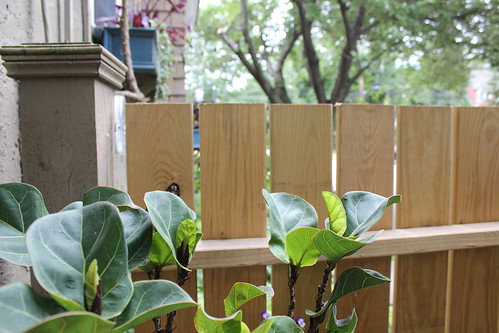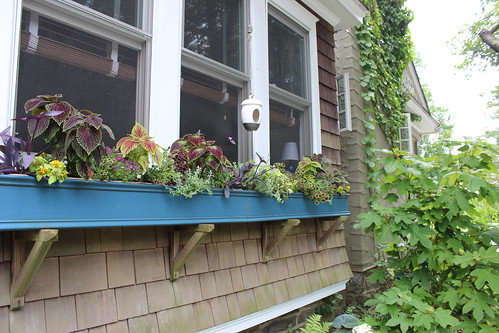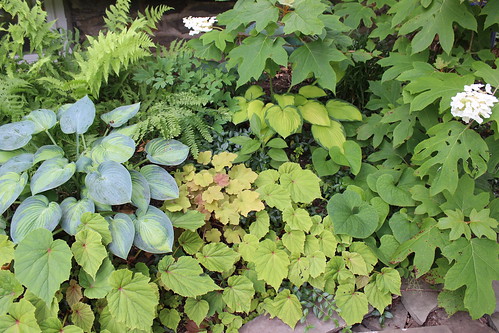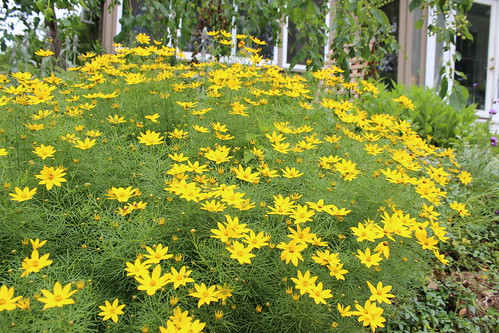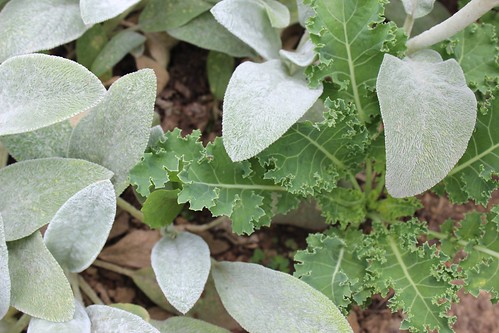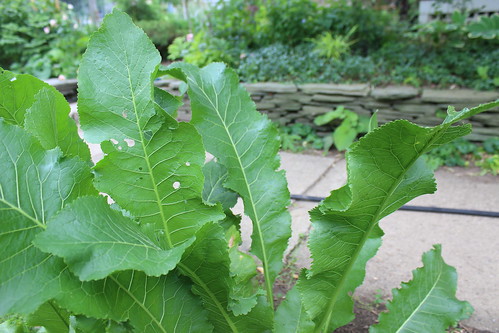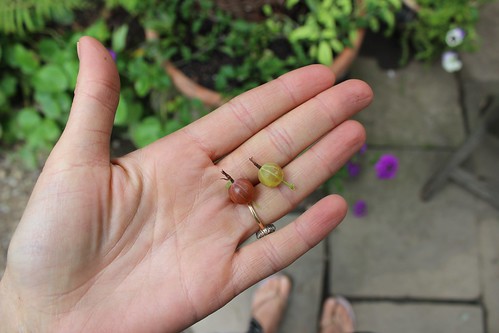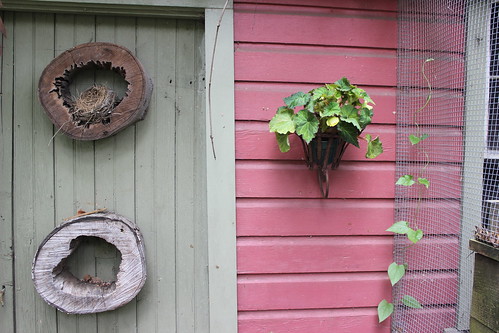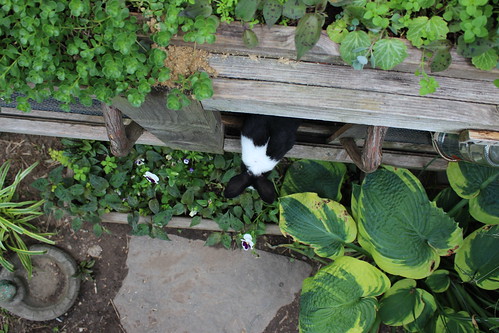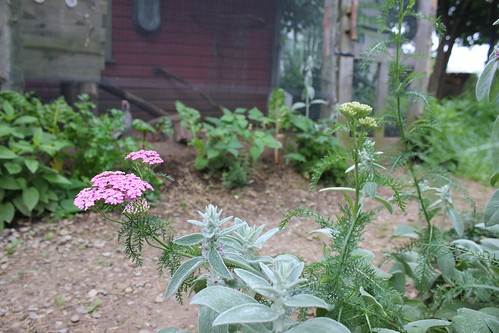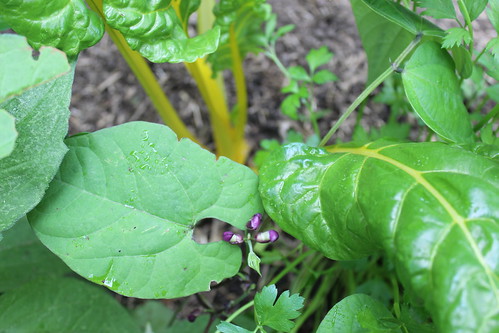Over the past month-plus, I've watched my hives with a wary eye. They aren't doing well. The langstroth hive that I split off from my top bar isn't nearly as active as it should be (read: a cloud of bees orienting themselves to the hive location at least once a week), and while there are eggs and both capped and uncapped brood, it's just not quite as active as it should be. I will keep feeding them and watching.
My top bar hive, however, is in collapse. When I last wrote
about my hives, I knew that they'd swarmed and hoped to see evidence of a new queen. I did not. I saw flies hanging around, and when I opened the top to inspect two weeks ago, there was a small ant colony making itself at home. A strong hive will keep out robbing bees from other colonies (there were lots of bees in this hive and around it that didn't look like mine), ants, and small hive beetles, the bane of southern bee keeping. Even worse, I didn't see any new brood. The hive was queenless. I hoped that I'd caught it in time, and moved a frame with a queen cell and lots of brood from my langstroth hive over to this top bar hive. I watched the bees tend to the queen larvae, checked the window every day to watch its progress. It was capped, and one day, it was open. The queen had emerged. Unfortunately, I also noticed larvae for something else crawling around, and the honeycombs seemed to change color.
On Sunday, I got up early, suited up, and got ready for inspection. As always, I began my inspection from the back. This was the first frame of honey that I pulled:
Isn't it beautiful? Golden capped honey, super straight comb. I set it aside and pulled out four more just like it. One comb fell off of the starter strip (it was a hot day, and the wax begins to melt), so I put it into my harvesting bowl to take in. I harvested nearly 5 cups of honey from the comb that fell. Forager bees were actively putting away honey and pollen, and younger bees were building new comb. As I worked my way to the front, however, it was very clear that the hive was in distress. The combs were very dark and liquidy looking. The entire front of the hive was in collapse.
The larvae that I'd seen late last week were everywhere. Bees were robbing the fermenting honey, and even though the queen cell had been opened, the comb was getting slimy and there was no evidence of new activity. I took out the worst of the infected combs and put them in my chicken yard for the girls to eat:
You can see how dark the comb is- the comb closest to the wood is still capped, but those white spots on the dark comb are small hive beetle larvae. I was devastated, even though I knew a friend and neighbor beekeeper had lost her hives the same way, and there's little to do to combat these beetles besides having a really strong hive.
Grief aside, I have an action plan. I'm going to take the combs that are still good and move them into my deep-bodied langstroth hive for those bees to eat and use. There are two top bar combs in that hive already, and if I add four more, the bees there should be able to build up their colony. It's my hope that next year the queen will lay eggs on the top bar combs and I can move them and their nurse bees over to repopulate my top bar hive.
But what about the bees currently in the top bar? A bee that is "born" in the spring and summer only lives for 6-7 weeks. They emerge, clean their cells, tend the queen, tend new bees ("nurse" bees), build new comb, the finally go out to forage. With my colony, all that's left are a few worker bees and the foragers. They will continue to try to do their work until they die. I'm less worried about them, and hoping that some of the bees will remain with the combs I move into the langstroth hive and live a while longer.

















